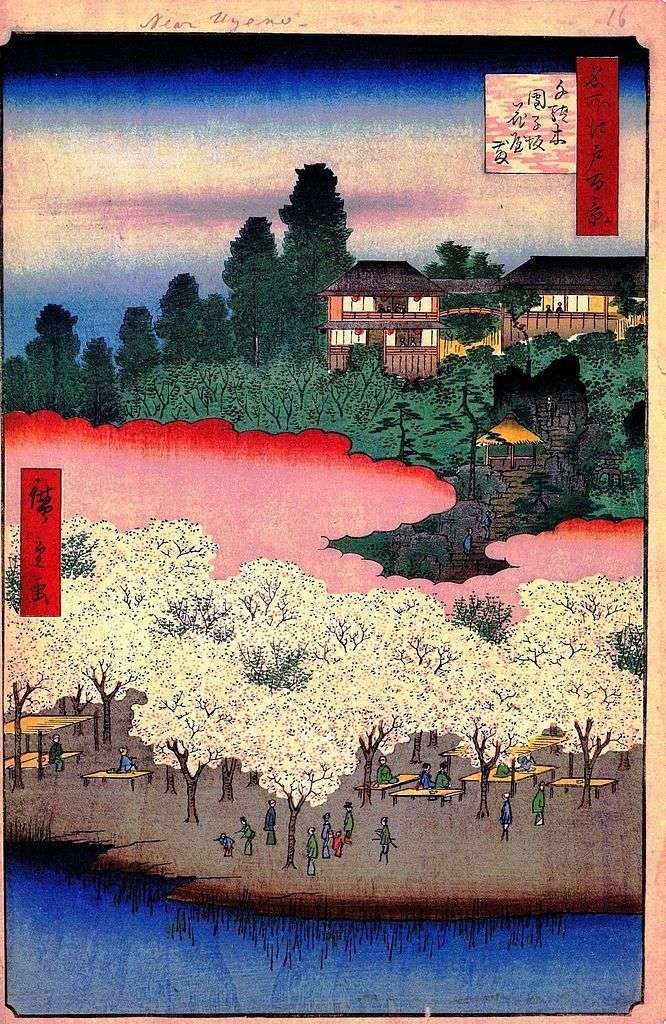
It is believed that the name Sandaga came from the main fishery of local peasants harvesting firewood in the surrounding forest, overgrown with trees sendan. Then they were brought to Edo for sale. Here was the famous slope of Dangodzak, where for a long time they traded cakes of dango, which gave the name to the slope. Hiroshige divides the composition into two equal parts using stylized clouds “Genji”.
In the upper part is located Hanajasiki – a three-story Pavilion of flowers. Sometimes it was also called “Wiki khan yasaki” – “Pavilion of the Flowers of the Four Seasons”. From it opened a beautiful view of the Ueno hill and the pond of Sinobadzu no Ike. At the bottom of the sheet, the artist painted a lotus pond and townspeople admiring blooming cherry blossoms. In the literature it is often suggested that the artist showed different terrains, as well as different seasons in one engraving. In the upper part – autumn, and in the lower part – spring. The latter assumption is more acceptable and underlines the importance of the name of the Flower Pavilion, where you could admire the IMI throughout the four seasons.
The differences in these engravings are not so significant. In addition to the general high brightness of the colors inherent in the late version, a small dark horizontal cloud is introduced into the engraving composition, giving the engraving a more twilight appearance.
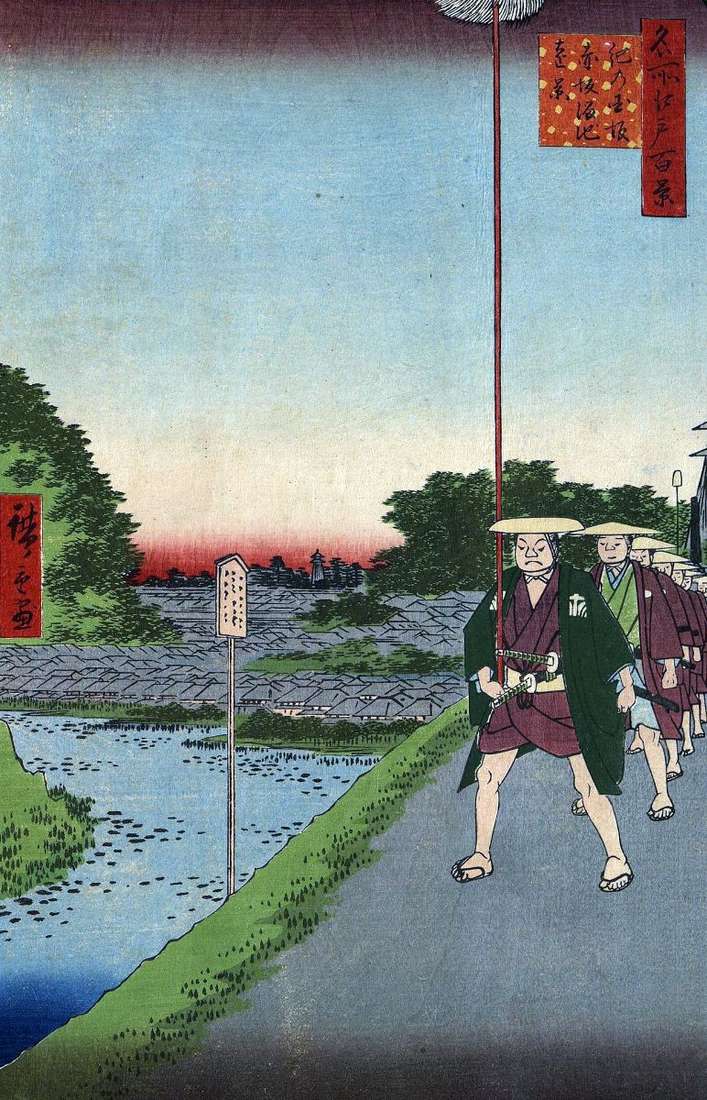 The slope of Kinokunizak and a distant view of the Tamkeke pond in Akasaka by Utagawa Hiroshige
The slope of Kinokunizak and a distant view of the Tamkeke pond in Akasaka by Utagawa Hiroshige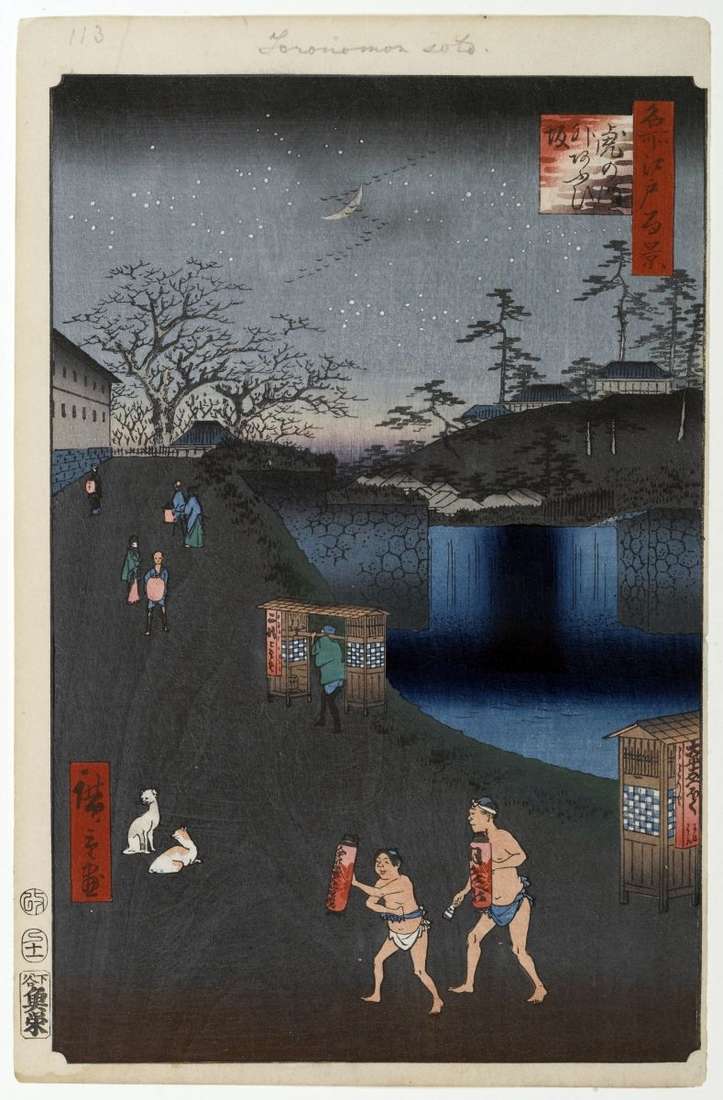 Slope of Aoizak outside the gates of Toranomon by Utagawa Hiroshige
Slope of Aoizak outside the gates of Toranomon by Utagawa Hiroshige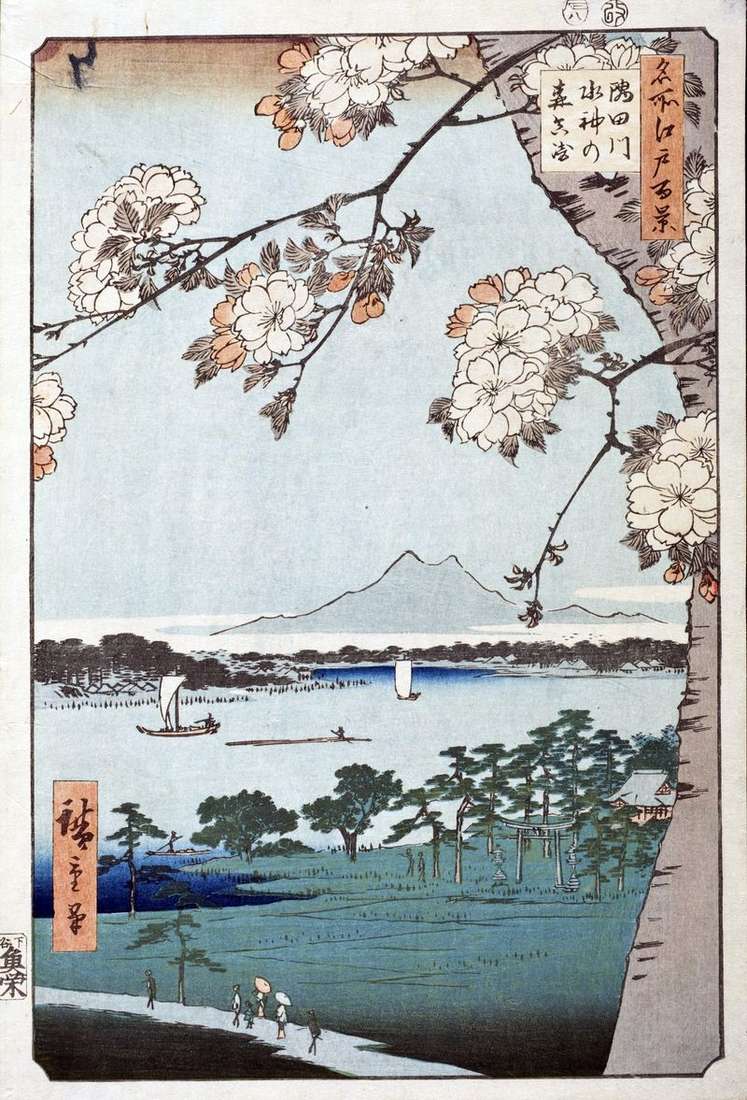 Sanctuary of Suidzin-no Mori and the locality of Massaki near the Sumidagawa River by Utagawa Hiroshige
Sanctuary of Suidzin-no Mori and the locality of Massaki near the Sumidagawa River by Utagawa Hiroshige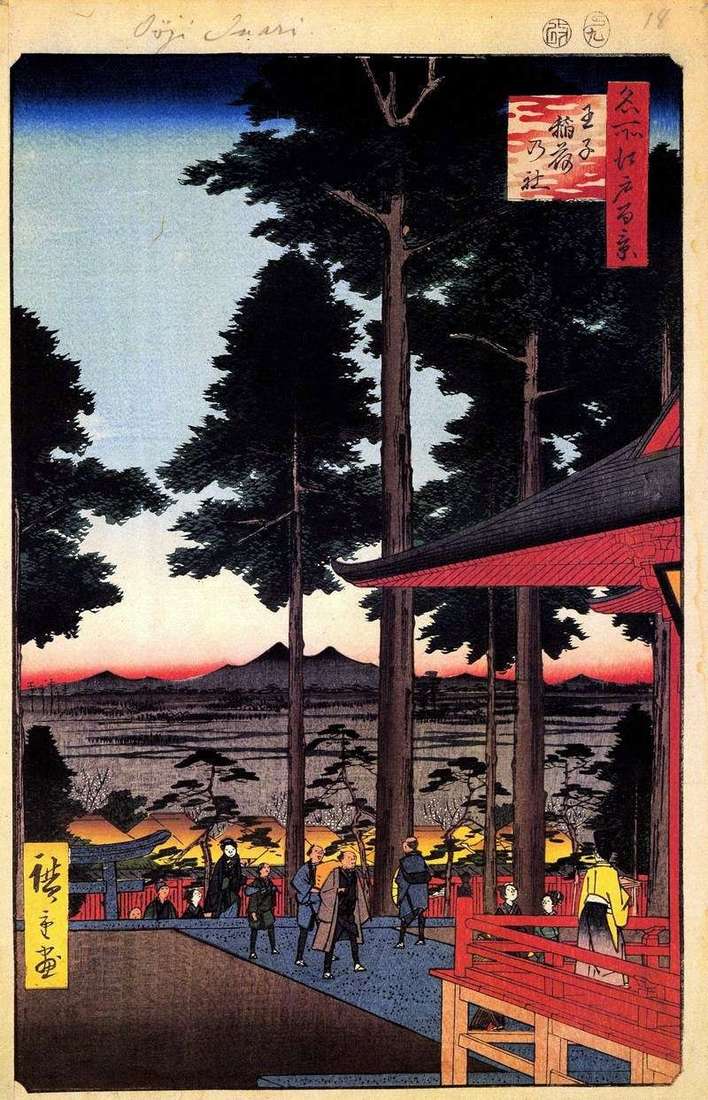 Inari Sanctuary in Ouji by Utagawa Hiroshige
Inari Sanctuary in Ouji by Utagawa Hiroshige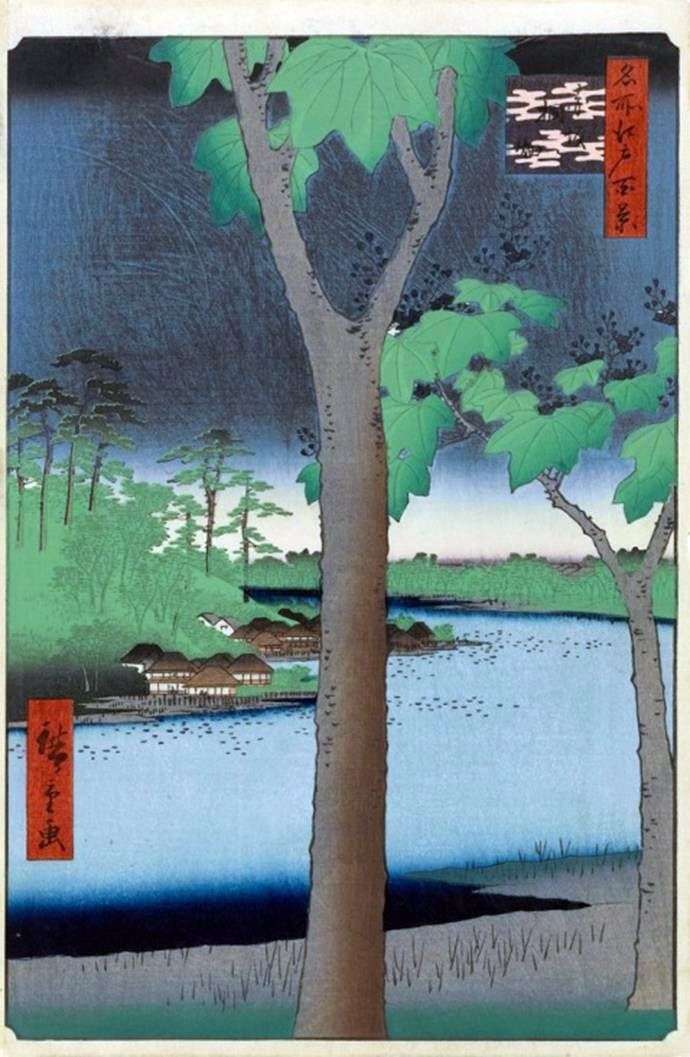 Akasaka, Pavlovny Plantation by Utagawa Hiroshige
Akasaka, Pavlovny Plantation by Utagawa Hiroshige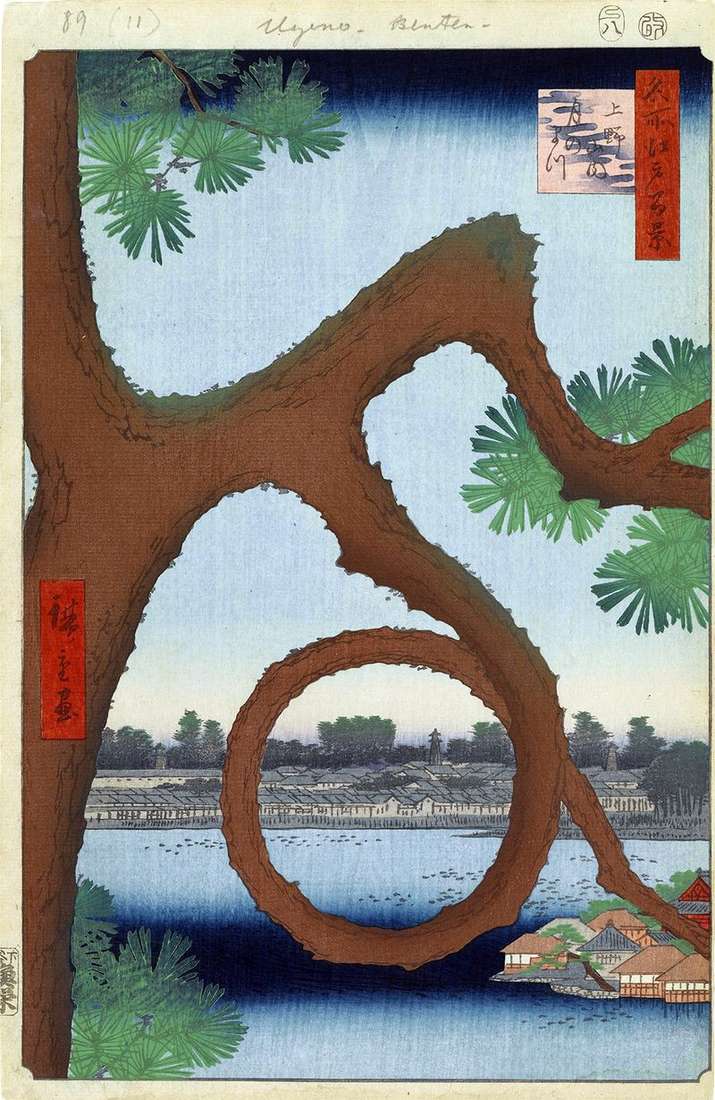 Moon pine on the territory of the monastery in Ueno by Utagawa Hiroshige
Moon pine on the territory of the monastery in Ueno by Utagawa Hiroshige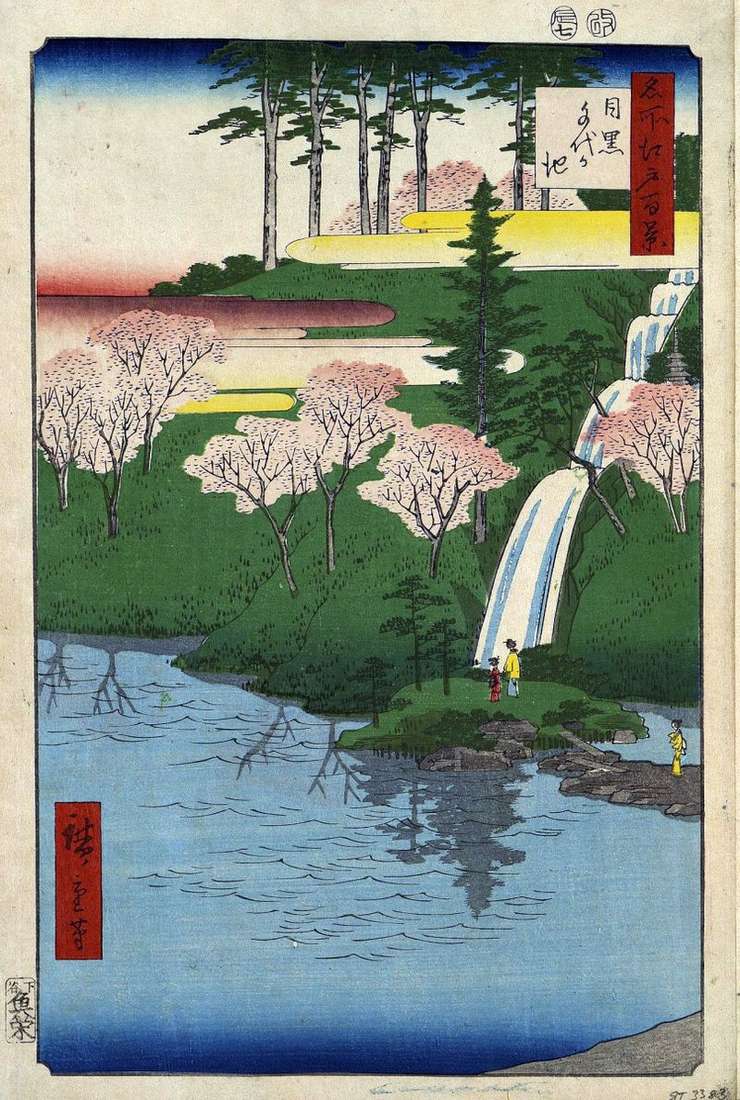 Meguro, pond Tiegaike by Utagawa Hiroshige
Meguro, pond Tiegaike by Utagawa Hiroshige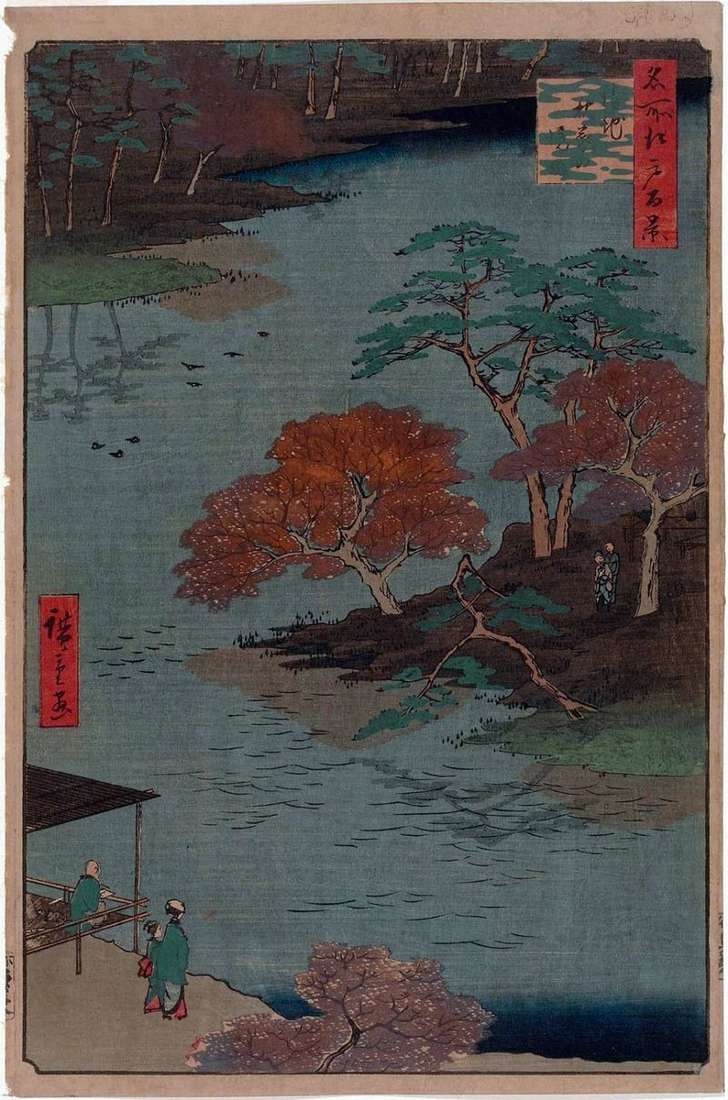 The sanctuary of Akiba in Ukate by Utagawa Hiroshige
The sanctuary of Akiba in Ukate by Utagawa Hiroshige